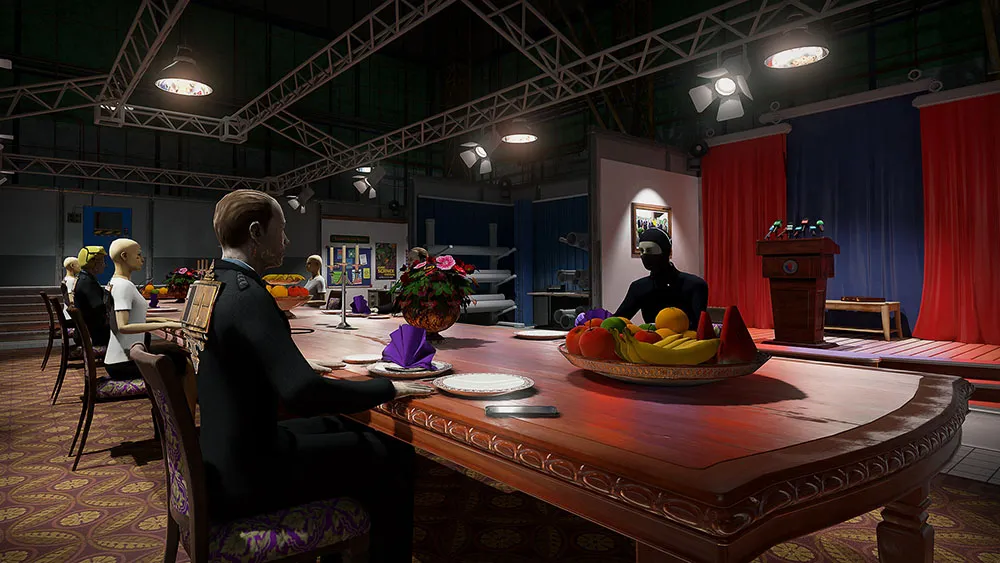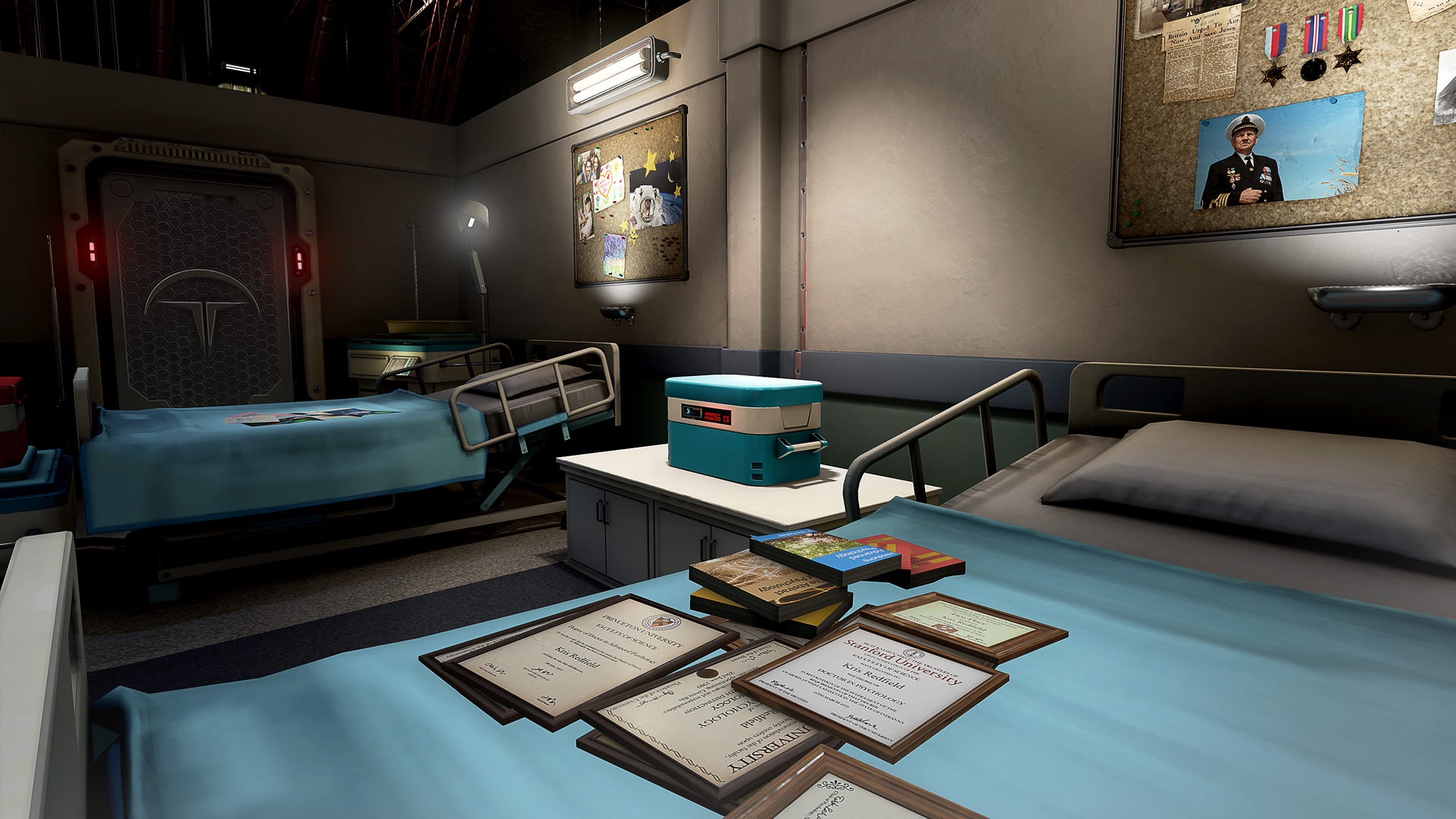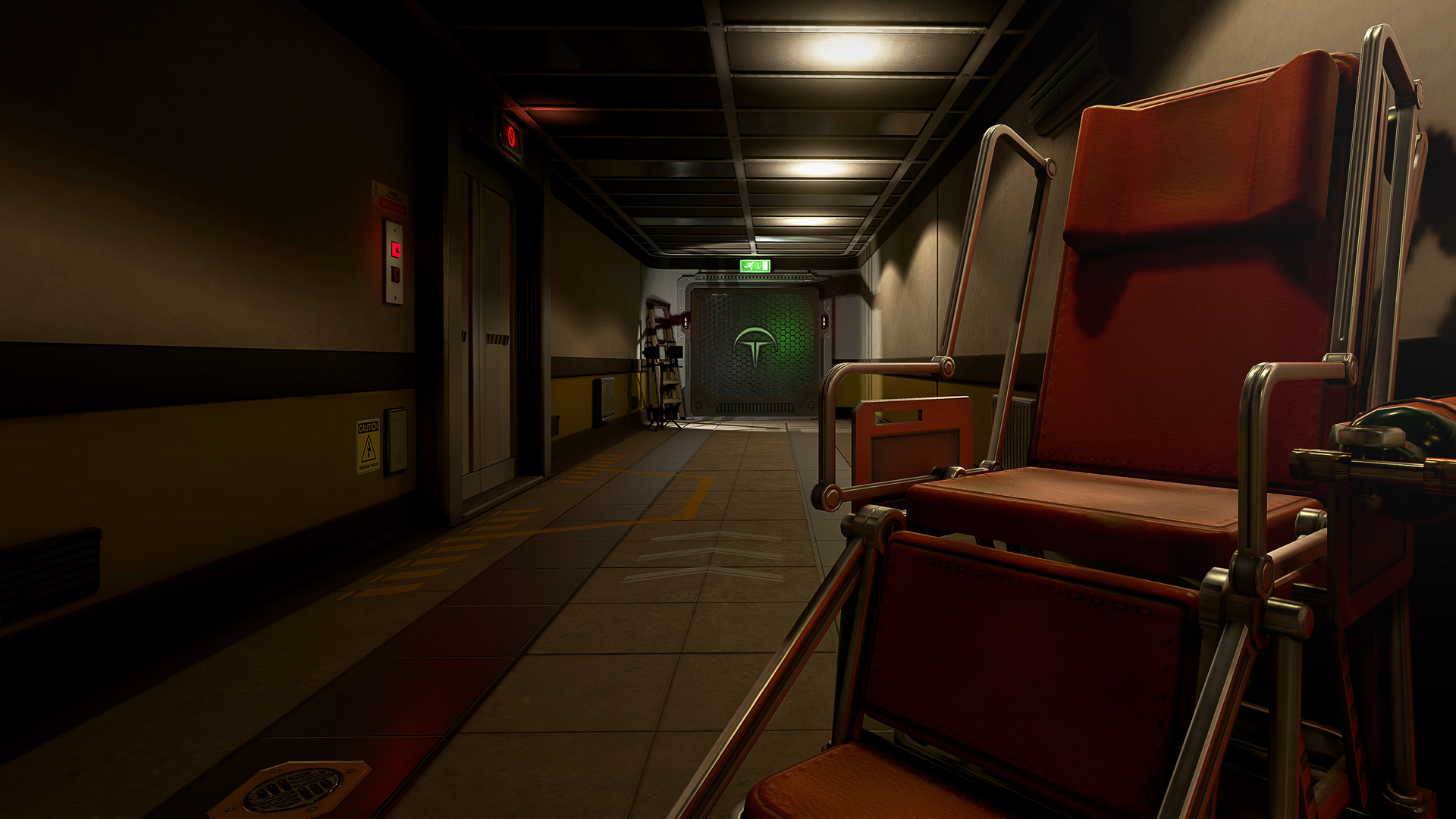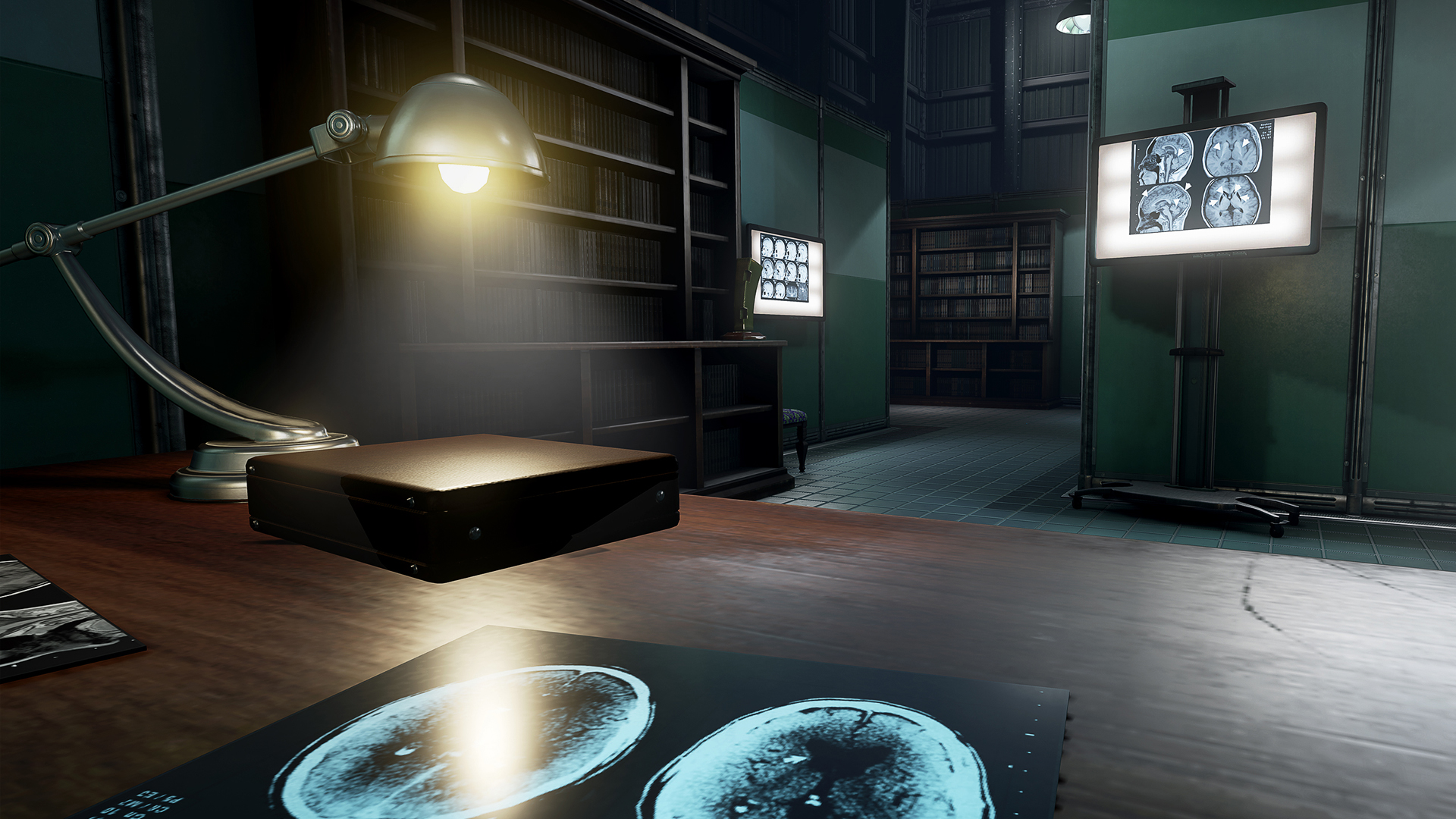What’s the cost of doing what you deem to be the right thing? This the question at the core of The Assembly, an immersive first-person VR adventure game for the Oculus Rift and HTC Vive from nDreams. You’ll take on the roles of both Caleb Pearson and Madeleine Stone as you bounce between differing perspectives in a richly detailed intertwining dual narrative.
In this dark, but soberingly realistic world, The Assembly is a secretive scientific research facility that skirts around the bureaucratic red-tape often found in real world academia and governmental oversight. Things that would often take years of lobbying and funding requests to get approved can be unilaterally started at The Assembly. While this is great for expediting initiatives, it comes at the cost of recklessness and potentially illegal operations.
The journey begins with you strapped to a gurney as Madeleine Stone, a renowned doctor in her field, that appears to be admitted to some sort of mental institution. As it turns out, you’re actually being taken in for the most involved job interview of your lifetime. Since she is already established in the medical field, her interview is actually a series of trials that test her logic, reasoning, and puzzle solving capabilities.
After each section of the game as Madeleine, you’ll switch to Caleb Pearson, one of the doctors already working at the facility, as you attempt to reveal a dangerously careless experiment to the CDC. His sections play out more like a detective experience as you peruse offices and laboratories for clues and evidence.
For all of the work that went into creating the world of The Assembly, such as the intricately detailed multi-level facility and its cast of characters, I came away wishing for a more grounded prologue of some kind. Many of the game’s concrete story elements are told either through brief flashback sequences, audio recordings, or the two main characters talking to themselves. It’s effective and helps maintain the immersion, but at the same time can feel disjointed without an overarching thread tightly pulling the world together.
The team at nDreams designed The Assembly to be an excellent introduction to VR experience for gamers and it certainly shows in both the game’s design and its control options. Since this is an entirely seated/gamepad VR experience, locomotion is a big sticking point. In the settings, you can adjust each analog stick to use snap or incremental turning, slow smooth turning, or even a normal, quick turning speed if you’re not affected by motion sickness. There is even a sprint/blink teleportation system in place, giving you a wide range of comfort options for players of all types.
Since The Assembly features two entirely independent protagonists, you’ll spend an approximately equal amount of time with each of them. Given the difference in content and gameplay, Madeleine and Caleb’s chapters serve as excellent foils to one another.
Just as you start to feel the monotony set in of having to sift through file cabinets and email logs as Caleb, you’ll switch over to Madeleine and solve a block puzzle that feels like something ripped out of a Zelda game.
Eventually, I found myself looking forward to the mental exercises found in Madeleine’s chapters as a challenging trial in and of themselves, and viewed Caleb’s slower-paced chapters as more of a break to let me catch my breath before the next Madeleine section. This is both because some of her puzzles are genuinely challenging and engaging, but also because some of them come off as overly ambiguous and difficult to understand.
By utilizing two different protagonists, nDreams is able to take an already inventive setting and make things even more interesting. While one character is being introduced to this bizarre and questionably ethical world, the other is deeply ingrained and trying to find a way out.
The overarching theme of the experience is to question authority and stick to your personal moral code without letting the promise of “progress” misguide you. But with that being said, the ending in and of itself presents multiple potential outcomes.
Rather than providing a clear right or wrong explanation in any scenario, The Assembly instead forces your brain to operate in the theoretical gray zone of ethics. The launch trailer itself asks several questions and poses multiple dilemmas: “Have they gone too far?” “We have the power to make a difference, but how we do so is a difficult choice.” “Where will you draw the line?” “Progress isn’t perfect.”
The voice acting for both Madeleine and Caleb was wonderful, as they each have a clear tone and personality in their voices. Everything from the music to the visuals combine to establish a living, breathing world. However, I did notice many of the NPCs suffer from relatively stiff animations and the facial textures on most characters looked a bit lackluster in comparison to the rest of the world. I also noticed a lot of jagged lines throughout the game, which is more of a limitation of current VR hardware’s resolution than the world itself.
Fortunately, what could have come across as a cheesy push for moral quandaries actually comes across as an organic form of storytelling. By stripping away many of the “game” elements that often plague experiences like The Assembly, such as “karma meters” or “health bars” or anything like that, the folks at nDreams have crafted a compelling story from start to finish. Each of the main characters stands out and you form a connection to each of them – which makes their inevitable meeting all the more interesting.
The Assembly is now available on Steam for Oculus Rift and HTC Vive, along with a 2D version for non-VR play.
The Assembly comes in at approximately 4-5 hours, depending on your play style, and offers a thought-provoking and unique narrative from two differing perspectives. The dual-protagonist approach is an inventive way of maintaining a sense of immersion, while still introducing complex layers to the story as it unfolds. It’s not perfect, but it’s full of enough twists and turns to keep you pushing until one of its several satisfying conclusions. Definitely recommended for fans of old-school style point-and-click adventure games, or gamers that enjoy solving a good mystery.
Read our Game Review Guidelines for more information on how we arrived at this score.





























